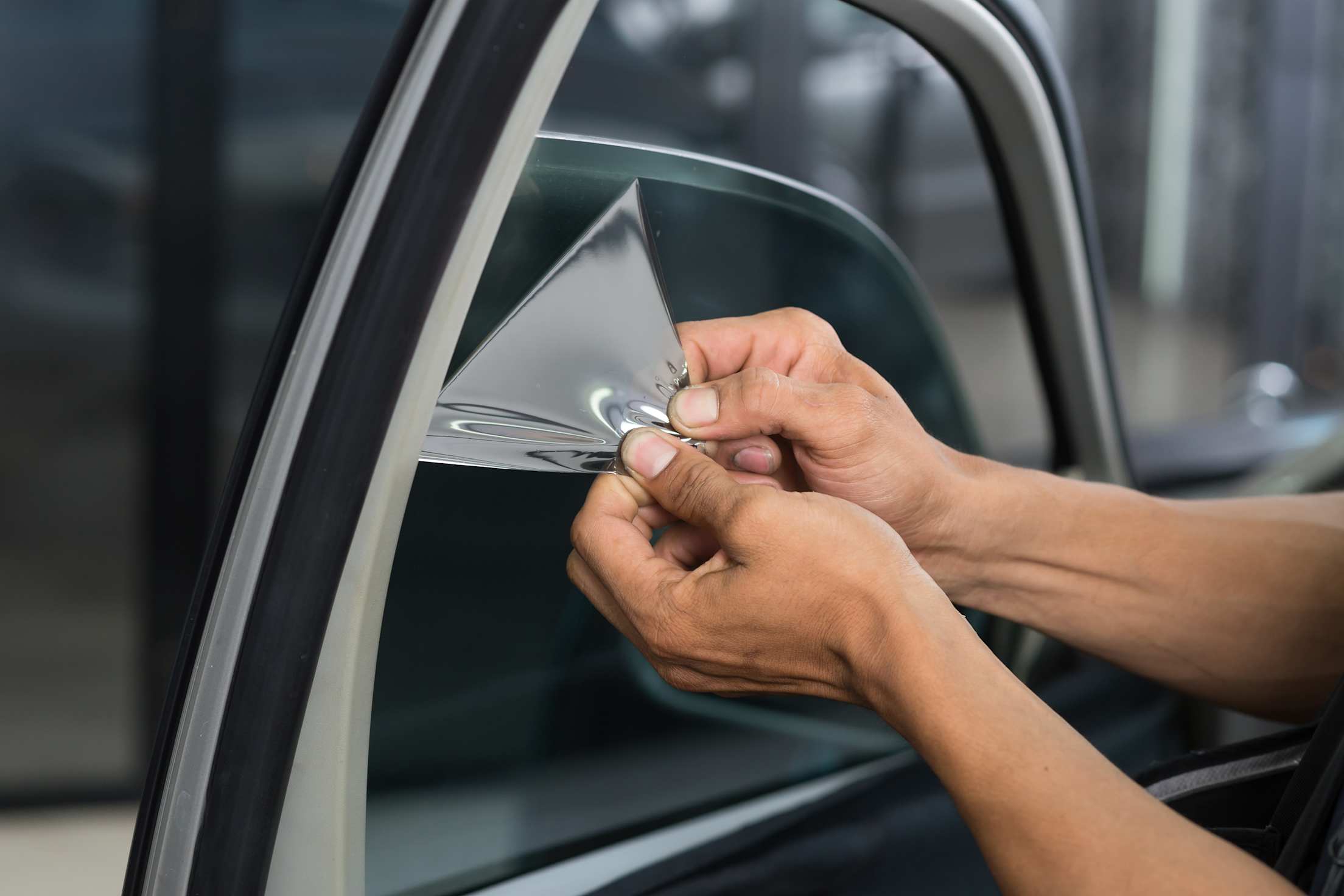
Is Your Car Window Tinting Safe?
Window films can reduce visibility and make driving at night dangerous.

Window tinting can filter out harmful UV rays and keep the interior of your car a few degrees cooler, but a tint that is too dark can impair your visibility and make driving, especially at night, more dangerous.
Tinted windows can also prevent a driver from communicating their intentions to other drivers and pedestrians, and vice versa, making driving inherently less safe. The Mercury News reports that having illegal window tint can even impact liability in a car accident.
In the case of an emergency where a front window may need to be broken to escape from the vehicle, the film can make it more difficult to remove the glass. Aftermarket tint is made of a strong mylar film, which can be difficult to rip without a knife, notes John Bridgwater, master mechanic and owner of two AAA Approved Auto Repair Centers in the Bay Area. Using a traditional spring loaded escape tool, a tempered glass window shatters into many small cubes. But the tinting film will prevent this from happening the way it was intended too, says Bridgwater.
Because of its potential impact on safety, window tinting is controlled with specific laws in most states and is illegal if applied to windshields and front windows in California.

Window tint may reduce your visibility.
Car Window Tinting Laws by State
Arizona
- Allowed on both front and rear side windows, rear glass, and upper portion of windshield.
- The front side windows must allow 33 percent of light in and not be more than 35 percent reflective.
- Rear side window and rear glass may have any tint level.
- Rear side window also may not be more than 35 percent reflective.
California
- Front side windows may not be tinted.
- Tint is allowed on rear side windows and the upper portion of windshield.
- To install tint, the vehicle must have a rear view mirror with 200 feet of visibility.
Idaho
- Windshield tint may not cover more than the top 6 inches of the glass.
- The front side vents, front side windows, and the back glass must allow 35 percent of light in.
- Rear side windows must allow 20 percent of light in.
Montana
- Windshield tint allowed above the AS-1 line (this is often marked on the windshield, generally 5 inches or so down from the top), but not in red, yellow, or amber.
- The front side windows must allow 24 percent of light in and not be more than 35 percent reflective.
- The rear side windows must allow 14 percent of light in and not be more than 35 percent reflective, except for the rear window or side windows behind the front seat on a multipurpose vehicle, van, or bus.
- Drivers can obtain a waiver to use tinting for medical reasons.
Nevada
- Front side windows may have a non-reflective window tint as long as light transmission is at the minimum of 35 percent.
- To tint rear windows, you must have side mirrors that allow you to see at least 200 feet behind you. Cars with tint installed before 1993 are exempt from this requirement.
- Windshield tint can't be red or amber, and the material may not be placed less than 29 inches above the top of the driver’s seat when the seat is in its rearmost and lowermost position, as measured when the vehicle is on a level surface.
Utah
- Front windshield tint is allowed and must let 70 percent of light in.
- Windshield tint may not exceed 4 inches from the top or go below the AS-1 line.
- The front side windows must allow 43 percent or more of light in.
- The rear side windows may have any desired light transparency.
- A right side mirror is required in order to have any windows tinted.
- The third (upper) brake light may not be tinted.
- No mirrored or metallic tint on any windows.
Wyoming
- The front side vents, front side windows, and the back glass must allow 28 percent or more of light in.
- Windshield tint may not exceed 5 inches from the top or go below the AS-1 line, whichever is closer, and the tint cannot be reflective or red, yellow, or amber.
- Window tint may not be more than 20 percent reflective.
- Both side mirrors are required for any tint.
- Waiver is available for medical reasons.
Smart Tip: If you are unsure if your window tint fits legal requirements in your state, most tint shops will be able to test it for you. You can also buy a tool (for around $100) to check light filtering levels, but it’s not worth investing in for a single use.

You may be able to remove window tint at home.
How to Remove Window Tint
Bridgwater recommends that you have a professional tint shop handle removing the tint.
It will save you a lot of time, and stress, to outsource a project that can easily take hours. Removing window tint film yourself is a tedious job, especially if the tint is old.
If you decide to give it a go, use a steamer on the inside and the outside of the glass, paying extra attention to the very edge of the glass to make removal easier. Once you’ve steamed it well, try lifting the edge of the tint film with a razor to slowly pull it off. If it doesn’t start to come off, continue to steam with caution. Old tint often comes off in chunks, making it much more difficult to remove. Once the film is peeled off, you may have to use a solvent like GooGone to remove any remaining adhesive.